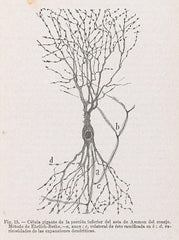Art and science, seemingly disparate domains, converge in the captivating realm of scientific art. Going beyond mere aesthetics; it intertwines the precision of technical observation with the finesse of artistic expression. This fusion creates a visual language that communicates complex analytical concepts with clarity and beauty.
What is scientific art?

Scientific art is a unique form of creative expression that combines the principles of science with the aesthetics of art. This blend of art and science allows for the exploration of complex technical concepts through visually appealing and thought-provoking artwork. Technical art not only serves as a medium for technological communication, but it also has the potential to evoke emotional responses and stimulate critical thinking.
It's significance lies in its ability to bridge the gap between art and science, catering to individuals with a diverse range of interests and backgrounds. By merging these two disciplines, it has the potential to make science concepts more accessible and engaging to a broader audience. This form of art can also serve as a means of inspiring curiosity and appreciation for the world, as well as fostering a deeper understanding of analytical principles.
One example is the work of artist and biologist Ernst Haeckel, whose intricate illustrations of marine organisms have been celebrated for their accuracy and artistic beauty. Haeckel's drawings not only provided valuable insights into the nature, but also captivated viewers with their intricate and mesmerizing patterns.
Another notable example is the photography

of Berenice Abbott, whose images of phenomena such as waves and light refraction are both visually striking and informative.
What makes scientific art important is its ability to effectively convey concepts while also appealing to the emotions and intellect of the viewer. This requires a careful balance between artistic creativity and technical accuracy.
In order to provide a satisfying experience from both the artistic and practical perspectives, these artists must possess a deep understanding of the concepts they aim to depict, as well as the applied skills needed to create visually compelling artwork.
Additionally, they should have a keen eye for aesthetics and a creative flair that enables them to effectively communicate complex scientific ideas through their art.
Types of scientific illustrations
Scientific illustrations are essential tools for communicating complex concepts and data in a visual and easily understandable way. They play a crucial role in science research, education, and communication, providing visual representations of everything from microscopic cellular structures to astronomical phenomena.
There are various types of scientific illustrations, each serving different purposes and requiring different techniques and skills.
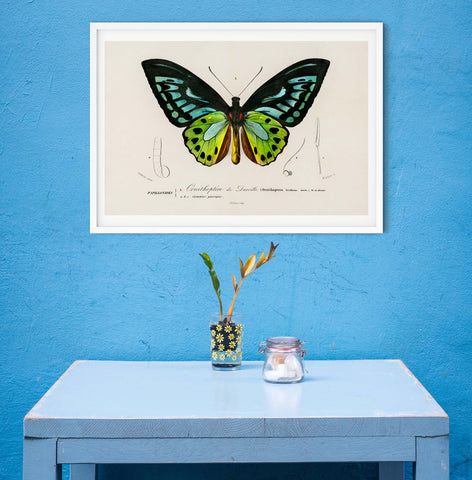
Natural History and Entomology Illustrations
Natural history and Entomology (the study of insects) illustrations have played a crucial role in documenting and communicating new discoveries in the biological world. These drawings have been used to convey the physical characteristics and behaviours of organisms, as well as to reconstruct past environments and depict abstract life science concepts.
Through various techniques and tools, biological illustrators have been able to produce accurate and informative drawings that aid in investigations, education, and conservation efforts.
Hyper-realism is a popular technique used in naturalist drawings, particularly for animal representation. This approach involves the meticulous portrayal of every detail of an organism, such as its fur, feathers, scales, and anatomy. These highly detailed illustrations provide a visual reference for researchers and educators, allowing them to study the physical attributes of different species and distinguish between similar organisms.... it also makes for great sci posters!
Botanical art
Botanical art has a rich history dating back to ancient times, but it gained recognition in the 16th century when new discoveries in botany and horticulture led to a demand for accurate and detailed illustrations of plant specimens.

Botanical art plays a crucial role in blending art and science by accurately depicting plant species for study, as well as communicating the beauty and significance of the botanical world to a wider audience. This art form has evolved over the centuries, with key artists making significant contributions to the field and science knowledge of the public through their innovative techniques and media.
By creating detailed drawings, botanical art serves as a vital tool preserving the history of plant species. It continues to be an essential part of the analytical community, as well as a celebrated art form in its own right.
Medical Illustrations
Medical drawings play a crucial role in communicating complex medical information visually. With the precision and accuracy required in the medical field, these depictions serve as invaluable tools for science and medical professionals. The ability to convey anatomical structures, surgical procedures, and disease processes with clarity and detail is essential for effective medical communication and understanding.
The importance of medical illustrations lies in their ability to bridge the gap between written and visual information. In a field where precision is paramount, pictures provide a clear representation of anatomical structures, medical procedures, and pathological conditions. This allows for accurate representation and communication of complex medical concepts, supporting diagnosis, treatment planning, and medical education.
The characteristics of medical illustrations require a high level of precision and accuracy. The visual representation of anatomical structures, surgical techniques, or pathological conditions must adhere to strict accuracy and anatomical correctness.
Medical illustrators must have a deep understanding of human anatomy and medical concepts to accurately depict these complex subjects. The level of detail and realism in medical sketches is crucial to effectively convey the necessary information to medical professionals and lay audiences alike.
Maps
Maps, often viewed as utilitarian tools for navigation, take on a dual role as often beautiful examples of technical art.
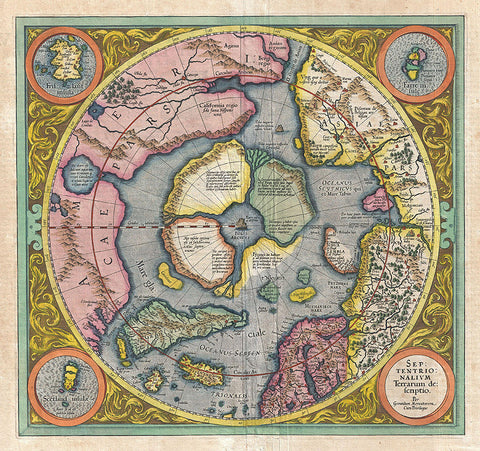
Beyond their functional purpose, maps become intricate visualizations of spatial data, offering a unique blend of precision and artistic expression. Cartographers, the artists behind these maps, employ a combination of geographic knowledge, design principles, and aesthetic sensibilities to create visual narratives that convey complex information with clarity and beauty.
In the realm of art, maps serve as powerful instruments for representing the physical and cultural landscapes of our world. Through meticulous attention to detail, cartographers capture the nuances of terrain, depicting mountains, rivers, and coastlines with precision.
The use of colour, shading, and symbols further enhances the visual impact, turning maps into aesthetically pleasing representations of geographical information. Historical maps, in particular, showcase the evolution of cartographic techniques and provide glimpses into the scientific understanding of different eras.
The artistry of maps extends beyond geographical representations to include thematic maps that visualize technical data. From climate patterns to population densities, cartographers transform abstract information into compelling visual narratives.
These thematic maps use colour gradients, scales, and innovative design elements to convey scientific insights in a format that is accessible to a broad audience.
Vintage Artists in Science
Vintage art and science have long been intertwined, with artists and scientists collaborating to depict and communicate technical findings. Many vintage artists in science have left a lasting legacy, with their work providing a visual record of important discoveries and phenomena. In this article, we will explore the contributions of some vintage artists in the field of science, examining their impact on both the scientific community and the art world.
Leonrdo Da Vinci
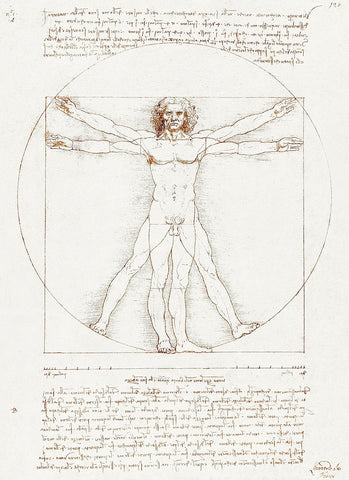
Leonardo da Vinci is often revered as one of the most influential figures in art history, but his impact extended far beyond the realm of painting and sculpture. He can be considered the first scientific illustrator due to his extensive technological studies and observations, which heavily influenced his art.
Da Vinci's focus on human anatomy and perspective directly impacted his artistic practice and the creation of some of his most famous works, such as the Vitruvian Man and The Last Supper. His curiosity and experimentation in diverse fields contributed to his role as a pioneer in science, showcasing the connection between his analytical pursuits and his artmaking.
Santiago Ramón y Cajal
Santiago Ramón y Cajal was a Spanish scientist known for his pioneering work in the field of neuroscience. He was also an accomplished artist, particularly known for his detailed drawings of the human brain. Ramón y Cajal's artistic pursuits were deeply intertwined with his sience career, and his intricate ink-on-paper drawings have been widely recognized for their value as a source of neurological information.
Before pursuing a career in medicine and neuroscience, Ramón y Cajal had a background as an artist. He was known for his keen observational skills and his ability to capture fine details, which served him well. It was this attention to detail that allowed him to produce such accurate and informative drawings of the brain, showcasing the complex and intricate structures that make up the human nervous system.
Charles Darwin
Charles Darwin was a renowned naturalist and biologist whose ground-breaking work in the field of evolution by natural selection continues to impact the study of biology to this day.
Born on February 12, 1809, in Shrewsbury, England, Darwin showed an early interest in nature and science. He attended the University of Edinburgh and later transferred to Christ's College, Cambridge, to study natural history and geology. It was during his time at Cambridge that his passion for science was truly ignited.
Darwin's most famous expedition took place between 1831 and 1836, when he embarked on a five-year voyage aboard the HMS Beagle. The primary purpose of the voyage was to chart the coastline of South America, but it proved to be a transformative experience.

During the expedition, he made numerous important discoveries, including the observation of various species of plants and animals, and the collection of geological and fossil samples. These findings would later form the basis of his ground-breaking work on the theory of evolution by natural selection.
After returning from his voyage on the Beagle, Darwin began to work on his theory of evolution. In 1859, he published his most famous scientific paper, "On the Origin of Species," in which he outlined his theory that all species of life have descended over time from common ancestors through a process of natural selection. This theory revolutionised the field of biology and had a profound impact on scientific thought.
Darwin's work has had a lasting influence on the study of biology and evolution. His theory of natural selection brought about a paradigm shift in the understanding of how species evolve, and it laid the foundation for modern evolutionary biology. His contributions to the field of science have been widely recognized, and he is often regarded as one of the most influential figures in the history of science.
Ernst Haeckel
Ernst Haeckel was a prominent German biologist, philosopher, and biological artist who made significant contributions to the fields of biology and philosophy. He is best known for his work in evolutionary biology and his concept of recapitulation theory. Haeckel's impact on these fields has been far-reaching and continues to influence modern science.
As a biologist, Haeckel was a pioneer in the study of evolutionary biology. He was a strong proponent of Charles Darwin's theory of evolution and worked to expand upon and further develop it. Haeckel's extensive research and artistic observations of art forms in nature led to the formulation of his own theories on phylogeny and the evolutionary history of organisms. His work on the classification and relationships of different species laid the groundwork for modern taxonomy and evolutionary biology.
Maria Sibylla Merian
Maria Sibylla Merian was a trailblazing 17th-century naturalist, entomologist, and botanical artist who made significant contributions to both sci art and entomology. Her adventurous spirit and innovative explorations in Surinam set her apart as a pioneer in her field. Merian's detailed studies of insect metamorphosis and her acclaimed botanical art has solidified her reputation as a leading figure in the world of natural science.
Born in Frankfurt, Germany, in 1647, Merian developed a passion for nature at a young age, fascinated by the life cycle of insects and the intricate beauty of botanical specimens. She began her career as an illustrator, producing detailed and accurate depictions of plants and insects. However, it was her in-depth studies of insect metamorphosis that would eventually earn her widespread acclaim in the scientific community.
In the late 17th century, Merian embarked on a self-funded journey to Dutch Surinam, a bold and adventurous undertaking for a woman of her time.
Merian's work in Surinam resulted in the publication of her masterpiece ; "Metamorphosis Insectorum Surinamensium," a groundbreaking study of the metamorphosis of insects based on her observations in the region. The detailed and accurate depictions in this work, coupled with her meticulous observations, solidified her reputation as one of the leading entomologists of her time.
John James Audubon
John James Audubon was a renowned wildlife artist and ornithologist whose major achievement was the publication of Birds of America, a ground-breaking work that revolutionised the study of birds and their habits. Born in Haiti in 1785, Audubon grew up in France and later moved to America, where he devoted much of his life to studying and painting birds.
Audubon’s passion for birds led him to observe their behaviour and migratory habits, producing lifelike and accurate pictures of various bird species. His detailed and vivid artwork captured the beauty and diversity of birds in their own habitats, earning him recognition as one of the greatest bird art painters of all time.
The publication of Birds of America, a collection of 435 hand-coloured engravings, was a major achievement that showcased Audubon’s extensive knowledge and artistic talent. This monumental work had a significant impact on the field of ornithology, as it provided valuable insights into bird behaviour and ecology. It also contributed to a greater understanding and appreciation of avian diversity and conservation.
Audubon’s influence extended beyond his artistic and Science contributions. His passion for birds and nature inspired others to follow in his footsteps, leading to the founding of the Audubon Society in 1905. This organization continues to promote the conservation and protection of birds and their habitats, carrying on Audubon’s legacy and perpetuating his impact on the field of ornithology.
Anne Pratt
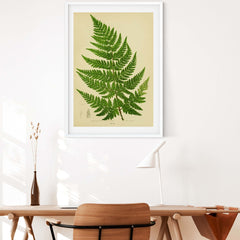
Born in 1806, Anne Pratt was largely self-taught and went on to author several significant botanical volumes, leaving an indelible mark on the world of botanical art. Her works, featuring fern art, flowers, and other flora, demonstrate the interconnectedness of art and science.
More information about Anne Pratt is available here
Scientific art as prints
Scientific art encompasses a wide range of visually stunning images, from microscope photography of microorganisms to astronomical imagery captured by powerful telescopes. These captivating images are not only informative and educational but also have great visual appeal, making them an excellent choice for art prints.
Dive into the world of scientific art with Lelloliving's extensive collection of vintage scientific prints. Our carefully curated range spans the realms of botanical art and nature-inspired illustrations, capturing the intricate beauty of the natural world.
Explore the intersection of art and science through Lelloliving's vintage scientific prints, where every piece tells a captivating story of the natural world.



